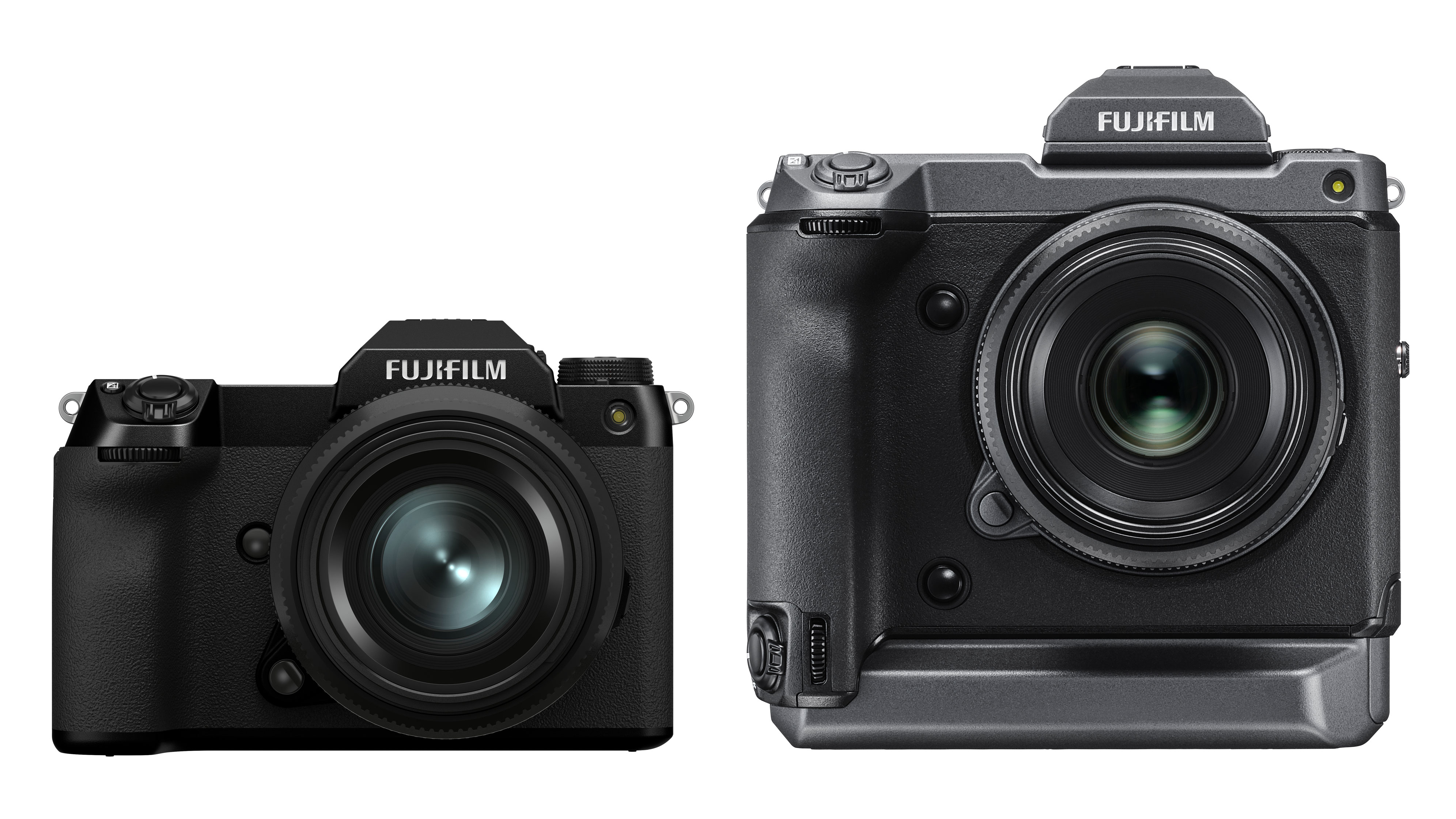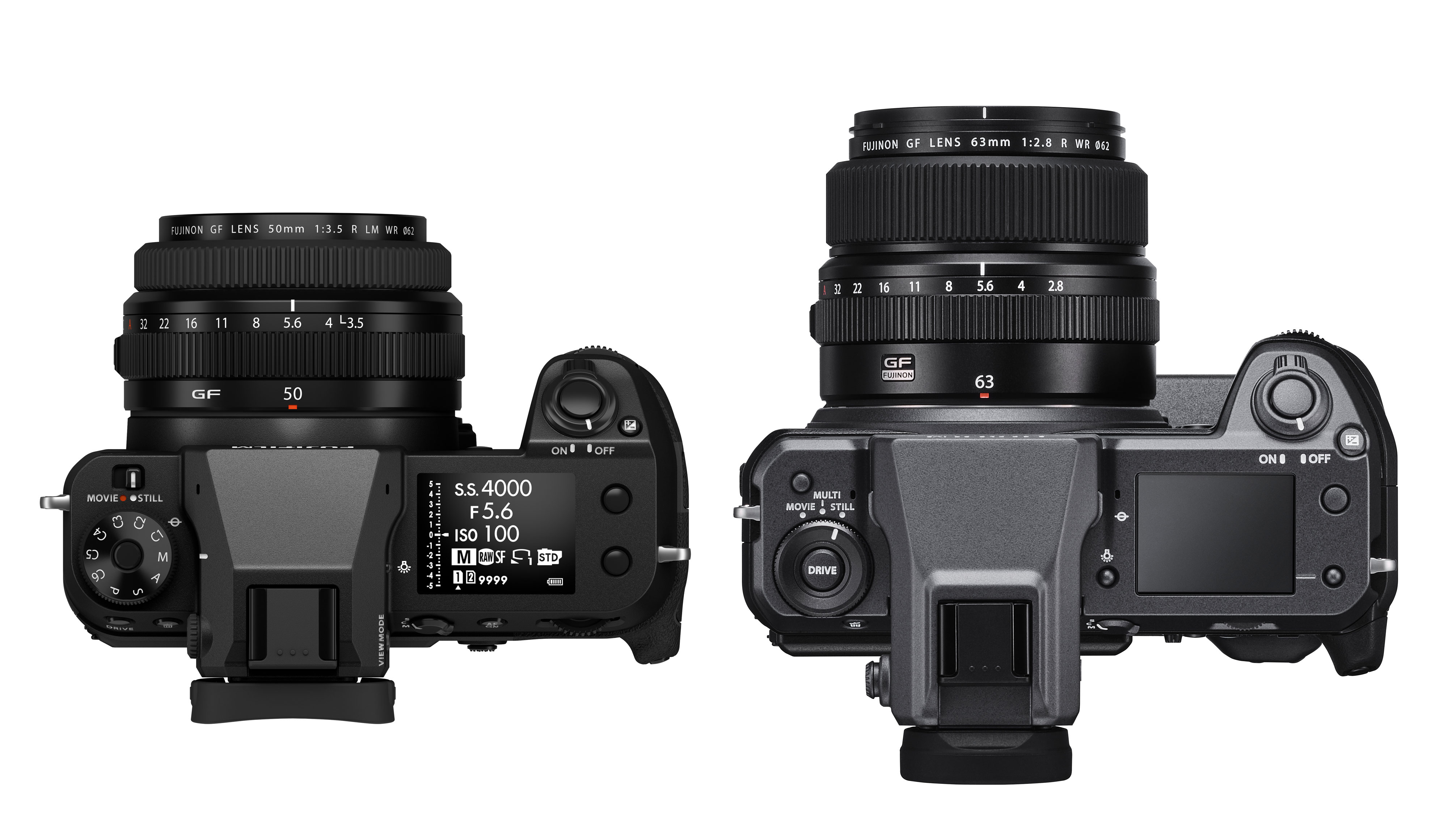Fujifilm GFX 100s vs GFX 100: how are they different and which one is best for you?
Fujifilm really rocked the boat when it launched the GFX 100s – but why is the older GFX still going and is it worth it?

Perhaps the biggest surprise about the Fujifilm GFX 100s is the price. The downsizing of a medium format camera to the size of a DSLR is a story in itself, but it now puts this medium format camera in the same price bracket as a high-level full frame camera, and is bound to raise questions about the existing GFX 100.
Right now there is a price difference of around $4,000/£4,000 between the GFX 100s and the GFX 100, and this seems a lot, given how much they have in common. We predict (hope) that the price of the GFX 100 will soon drop, because right now we’re not sure there’s enough that’s different or better to justify that difference in price.
There are a number of differences between the GFX 100s and the older model, but there are many similarities too – and we’ll get those out of the way first.
1. GFX 100s vs GFX 100: what’s the same
Sensor: 102MP, 43.8x32.9mm, 400MP Multi-Shot
ISO range: 100-102,400
Autofocus: PDAF, 3.78M pixels, 100% coverage
Video: 4K 30p uncropped
The basic imaging engine is the same on both cameras. They both use Fujifilm’s 102MP, 43.8x32.9mm medium format CMOS sensor, and they both offer the 400MP Multi-Shot feature recently introduced to the GFX 100 via a firmware update.
The sensitivity range is the same, from ISO 100-102,400, and the on-sensor phase-detection autofocus system is the same, with 3.78 million AF pixels covering 100% of the image area.
Even the video capabilities are the same – on paper – with both cameras offering uncropped 4K 30p video capture, though there are a couple of differences in the video specs which we will come to shortly.
By far the biggest differences between these two cameras are in their physical design, and this is where one camera will win or lose, depending on which features you value most.
2. Size and weight
GFX 100s: 150.0x104.2x87.2mm, 900g (body only, with battery and memory card)
GFX 100: 156.2mm×163.6mmx102.9mm, 1,400g (body only, with viewfinder, batteries x2 and memory card)
The difference is pretty huge. The GFX 100s is 500g lighter than the GFX 100, and 30% smaller. It’s only a few millimetres narrower, but much lower in height and with a much slimmer body. The GFX 100s is now weather-resistant too.
Size is not the most important factor, of course. Many Fujinon GF lenses are pretty big, and there might be plenty of photographers glad to have a big and hefty body to mount them on. The larger GFX 100 has other advantages, as we shall see.
3. Vertical grip
GFX 100s: No grip (apart from optional metal hand grip)
GFX 100: Integral grip with twin batteries and vertical controls
There is a lot about the GFX 100s that is surprising, most of it positive, but not only does it lack the integrated grip and vertical controls of the GFX 100, you’re not going to be able to buy one separately – though Fujifilm is offering a smaller add-on handgrip.
If you need a proper grip, either for better handling, extended periods of vertical shooting or longer battery life, then it has to be the GFX 100. Heavy and expensive as it is, it’s the best for extended horizontal and vertical shooting.
4. Controls
GFX 100s: Regular mode dial
GFX 100: Unconventional context dial
Fujifilm surprised us with its control layout for the GFX 100, which didn’t include Fujifilm’s trademark shutter speed/ISO dials or even a regular mode dial. Fujifilm said its control layout was a better fit for the studio photographers this camera is aimed at.
Maybe, but we still prefer the regular mode dial on the GFX 100s, which is what most photographers moving up to medium format will be used to and which probably makes a lot more sense for the more mobile, handheld photography style the GFX 100s is suited to.
5. Viewfinder
GFX 100: Interchangeable EVF, 5.76M dots, 0.86x magnification
GFX 100s: Non-interchangeable EVF, 3.69m dots, 0.77x magnification
The GFX 100 does have a definite advantage here. For one thing, its EVF is detachable and interchangeable (though there doesn’t seem to be anything to interchange it with). For another, it has a higher resolution of 5.76 million dots and a magnification of 0.86x.
The EVF in the GFX 100s is fixed and has an altogether meaner resolution of 3.69 million dots and a lower magnification 0.77x magnification.
Even if you never swap out the EVF on the GFX 100, it is better than the EVF on the GFX 100s. And while both cameras have a top plate status panel, the GFX has a customisable rear sub-monitor too.
6. In-body stabilization
GFX 100s: 6 stops
GFX 100: 5.5 stops
Fujifilm didn’t just make the in-body stabilization system in the GFX 100s 20% lighter and 10% smaller to fit the smaller body, it also made it more effective, using lessons learned from making the X-T4 and X-S10.
On paper, these two cameras are only 0.5 stops apart in stabilizing ability, but with many Fujinon lenses, Fujifilm is quoting a full stop advantage. That’s probably not enough to make you choose the GFX 100s over the GFX 100, but it’s reassuring that the new model’s downsizing hasn’t affected its performance.
7. Film Simulation modes
GFX 100s: 19
GFX 100: 18
The Fujifilm GFX 100s adds a new Nostalgic Negative Film Simulation mode, which aims to replicate the look of ‘American New Color’ popular in the 1970s-1990s.
Not everyone will feel the same way about Film Simulations. Pro photographers are more likely to shoot raw and choose their own presets, profiles or LUTs later. Videographers may feel differently, as the raw workflow for video is much more complicated and ready-made in-camera ‘looks’ are an easy alternative (though you can also use Fujifilm F-Log and choose LUTs later, without the complications of raw video).
8. Shutter
GFX 100s: 150,000 shots, 0.07sec release lag
GFX 100: 150,000 shots, 0.09sec release lag
There’s very little to report here. The shutter mechanism in the GFX 100s has been made 22% smaller and 16% lighter to fit the smaller body, but that’s the only difference – the shutter speed range and expected shutter life is the same.
One small advantage of the lighter shutter is that Fujifilm is quoting a slightly shorter release lag time of 0.07sec compared to 0.09sec on the GFX 100.
9. Battery/life
GFX 100s: 460 shots
GFX 100: 2x 400 shots
There is a significant difference in battery life. One of the reasons for making a smaller shutter mechanism in the GFX 100s was to be able to fit a battery in the grip rather than slung under the cameras as with the GFX 100. Indeed, Fujifilm has done well to achieve a battery life of 460 shots from this arrangement, which is better than some full frame mirrorless cameras.
However, the integrated grip design of the older GFX 100 means that there is room for two batteries in this camera, each of which can be used to power the camera for 400 exposures, and with a combined life of 800 shots. That’s a big plus point for the bigger camera.
10. Video differences
GFX 100s: Maximum recording time 120min
GFX 100: Maximum recording time 60min
The basic specs – uncropped 4K video at 30p – are the same on both cameras, but the GFX 100s offers two less obvious advantages.
The first is that it offers not just regular sensor based stabilization but a new Digital Stabilization feature too (with a 1.1x crop factor) that could prove very useful during handheld use and manual camera movements.
The second is that the maximum recording time has been extended from 60 minutes on the GFX 100 to 120 minutes. Both might sound generous, but in these times of COVID restrictions, home working and streaming, the demand for long recording times is only likely to grow.
11. Price
GFX 100s: $5,999/£5,499
GFX 100: $9,999/£9,999
We’ve saved the best – and the worst – until last. The price of the GFX 100s is something of a revelation, bringing a 100MP medium format mirrorless camera within range of top-end full frame models. In fact, it’s cheaper than the new Sony Alpha A1.
However, that does shine a rather harsh light on the price of the GFX 100. Right now, this is still selling for $9,999/£9,999, which seems way too much compared to the GFX 100s. It has longer battery life, a better viewfinder and better ergonomics, arguably, for big lenses and studio photography. But its advantages hardly justify the huge price difference right now.
Fujifilm GFX 100s vs GFX 100: Which should you buy?
Why you can trust Digital Camera World
If you have a steady, considered shooting style and work for hours at a time in the studio or on location, the GFX 100 is still the better tool… but not by much.
But if you like to work handheld with a more mobile style and out in the field, the GFX 100s is by far the better choice. It does everything the GFX 100 can but it’s lighter, cheaper and easier for new medium format users to adapt to.
Read more:
• Best Fujifilm cameras
• Best professional cameras
• Best medium format cameras
• Fujifilm GFX 100 review
• Fujinon GF lens roadmap
• Pre-order the Fujifilm GFX 100s at Adorama
• Pre-order the Fujifilm GFX 100s at Park Cameras
The best camera deals, reviews, product advice, and unmissable photography news, direct to your inbox!

Rod is an independent photography journalist and editor, and a long-standing Digital Camera World contributor, having previously worked as DCW's Group Reviews editor. Before that he has been technique editor on N-Photo, Head of Testing for the photography division and Camera Channel editor on TechRadar, as well as contributing to many other publications. He has been writing about photography technique, photo editing and digital cameras since they first appeared, and before that began his career writing about film photography. He has used and reviewed practically every interchangeable lens camera launched in the past 20 years, from entry-level DSLRs to medium format cameras, together with lenses, tripods, gimbals, light meters, camera bags and more. Rod has his own camera gear blog at fotovolo.com but also writes about photo-editing applications and techniques at lifeafterphotoshop.com




